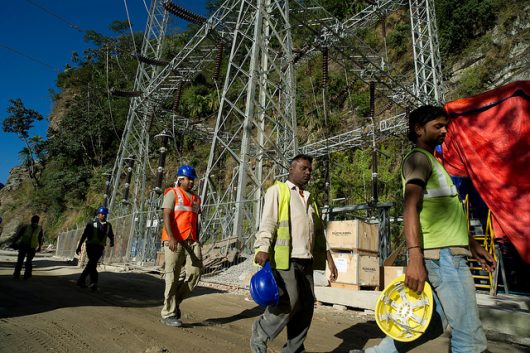How Hydropower Projects in Bhutan Boost Economy

Bhutan, despite its infinitesimal size, has recently found itself developing at breakneck speed. Regarded as Asia’s fastest growing economy, Bhutan is on the upswing with its GDP expected to grow by 11.1 percent between 2017 and 2019 — much more than its neighboring nations are presumed to expand in the same bracket of time, such as Ethiopia (8.7 percent) and India (7.73 percent). These projections beg the question: what is the driving force behind the betterment of the economy in Bhutan?
Hydropower Projects in Bhutan
Hydropower has proven to be at a climacteric point in the Bhutanese economy; the Prime Minister, Tshering Tobgay, listed it as one of Bhutan’s “Five Jewels” in 2014 specifically for this reason. “Indeed, the past fiscal year saw hydropower accounting for 32.4 percent of the country’s total exports and 8 percent of its GDP,” reported Alexander Jones of the International Banker, “with the construction of three projects, in particular, helping to push GDP growth to 6.5 percent last year.”
Similar projects have helped trim the nation’s trade deficit, in turn greatly benefit the economy of Bhutan.
Diplomacy with India
Two times, once in 2006 and again in 2009 (a renewal, of sorts, of the original accord), Bhutan and India co-signed an agreement regarding the hydroelectric industry. This agreement called for Indian assistance in the development of hydropower projects.
Three of these projects, developed under an intergovernmental model, have come to fruition: Punatsangchhu HEP I and II, and Mangdechhu HEP. The projects that began beneath this intergovernmental system are entirely financed by the Indian government.
Projects Working for Change
Six more similar tasks were born of a joint venture model, though only one — Kholongchhu HEP — has seen the light of day, as of now. These developments are part of the larger scheme outlined in the agreement: to establish 10,000 megawatts worth of hydropower by the year 2020.
The consummation of these projects is expected to double Bhutan’s hydropower generation from 1,600 megawatts to over 5,200 megawatts in the span of a decade. An estimated 80 percent of this power would be sent to India, with the remainder being consumed domestically.
Soon enough, India may not be Bhutan’s only partner in the field of hydropower. Bangladesh has offered $1 billion to establish a hydropower project of their own in Bhutan’s Lhuentse district, worth 1,125 megawatts. This power would be channeled to Bangladesh through India.
Teamwork Makes the Dream Work
This trilateral effort was sent to both India and Bangladesh by Bhutan in early 2016. While Bangladesh accepted the memorandum, although making slight amendments, it took India a year to agree, eventually returning the agreement in early 2017.
India is also Bhutan’s “largest trading partner” according to the Economic Times, with exports making up 90 percent of the country’s trade, and imports similarly constituting 82 percent. Besides hydropower, the economy in Bhutan thrives in exporting metals, chemical products, food, wood and rubber.
“Hydropower projects in Bhutan are an example of win-win cooperation,” wrote S.K. Sinha for the Kootneeti. As long as nations work together, clean and inexpensive energy in India can help all peoples and economies involved.
– Jordan De La Fuente
Photo: Flickr
